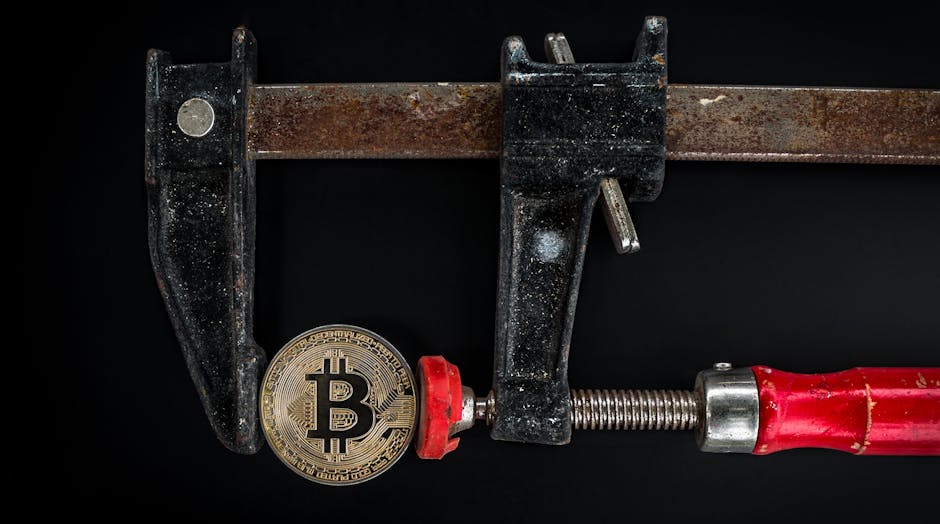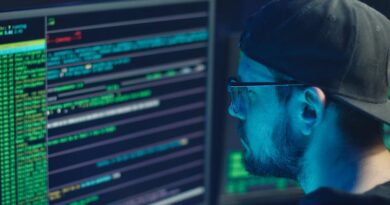Exploring Blockchain Security Best Practices for 2025
As we approach the year 2025, the importance of cybersecurity in the digital world continues to escalate. One particular area that has garnered significant attention is blockchain technology. With its decentralized and transparent nature, blockchain has revolutionized various industries, offering unparalleled security and efficiency. However, as with any technological advancement, blockchain is not immune to threats and vulnerabilities. In this article, we delve into the realm of ‘Blockchain Security Best Practices for 2025’, exploring the key strategies and measures that organizations and individuals can implement to safeguard their blockchain networks.
The Evolution of Blockchain Security

Blockchain technology, initially conceived as the underlying technology for cryptocurrencies like Bitcoin, has evolved beyond its original purpose. It now finds applications in various sectors, including finance, healthcare, supply chain management, and more. With this widespread adoption, the need for robust security measures has become paramount.
One of the key characteristics of blockchain technology is its immutability. Once a transaction is recorded on the blockchain, it cannot be altered or deleted, making it inherently secure. However, this does not mean that blockchain networks are impervious to security breaches. As hackers become more sophisticated in their attacks, the security measures surrounding blockchain must also evolve.
Encryption and Cryptography

Encryption and cryptography are the backbone of blockchain security. By encrypting data and transactions, blockchain networks ensure that sensitive information remains secure and accessible only to authorized parties. In 2025, encryption algorithms are expected to become more robust, making it increasingly difficult for hackers to breach the blockchain network.
Advanced cryptographic techniques such as zero-knowledge proofs and homomorphic encryption are being developed to enhance the security of blockchain transactions. These techniques enable parties to prove the validity of a transaction without revealing any sensitive information, thus protecting the privacy of users while maintaining the integrity of the blockchain.
Multi-Factor Authentication

Multi-factor authentication (MFA) is another crucial aspect of blockchain security. By requiring users to provide multiple forms of verification before accessing the blockchain network, MFA adds an extra layer of security, reducing the risk of unauthorized access. In 2025, MFA protocols are expected to become more sophisticated, incorporating biometric authentication methods such as facial recognition and fingerprint scanning.
With the rise of Internet of Things (IoT) devices connected to blockchain networks, ensuring the security of these devices becomes paramount. By implementing MFA protocols that are compatible with IoT devices, organizations can mitigate the risk of cyber attacks and data breaches.
Smart Contract Auditing

Smart contracts, self-executing contracts with the terms of the agreement directly written into code, are a fundamental component of blockchain technology. However, vulnerabilities in smart contracts can lead to serious security breaches. In 2025, smart contract auditing is expected to play a significant role in ensuring the security and integrity of blockchain networks.
By conducting thorough audits of smart contracts, organizations can identify and address potential vulnerabilities before they are exploited by malicious actors. Automated auditing tools powered by artificial intelligence (AI) and machine learning algorithms are being developed to streamline the auditing process and enhance the security of smart contracts.
Decentralized Identity Management
Identity management is a critical aspect of cybersecurity, particularly in blockchain networks where user identities are pseudonymous. In 2025, decentralized identity management solutions are expected to gain traction, offering users more control over their personal data and digital identities.
Decentralized identity management platforms enable users to store their identity information securely on the blockchain, eliminating the need for centralized identity providers. By leveraging decentralized identifiers and verifiable credentials, users can prove their identity without revealing sensitive information, enhancing privacy and security.
Regulatory Compliance and Governance
With the increasing adoption of blockchain technology, regulatory compliance and governance have become critical considerations for organizations operating in this space. In 2025, there is expected to be a greater emphasis on regulatory compliance frameworks tailored specifically for blockchain networks.
Regulatory compliance ensures that organizations adhere to legal requirements and industry standards, protecting them from potential fines and penalties. By implementing robust governance mechanisms and compliance frameworks, organizations can mitigate the risk of regulatory violations and ensure the security and integrity of their blockchain networks.
Collaborative Security Practices
In the rapidly evolving landscape of cybersecurity, collaboration and information sharing are essential for combating emerging threats. In 2025, collaborative security practices are expected to become more prevalent, with organizations and cybersecurity experts working together to address common challenges.
Cybersecurity information sharing platforms and threat intelligence feeds enable organizations to stay informed about the latest security threats and vulnerabilities. By sharing insights and best practices, organizations can collectively strengthen the security posture of the blockchain ecosystem and mitigate the risk of cyber attacks.
Common Misconceptions
One common misconception about blockchain security is that it is inherently secure due to its decentralized nature. While blockchain offers unparalleled security compared to traditional centralized systems, it is not immune to security breaches. Organizations must implement robust security measures to protect their blockchain networks from cyber threats.
Conclusion
To wrap things up, as we look ahead to 2025, the landscape of blockchain security is poised for significant advancements. By leveraging encryption and cryptography, implementing multi-factor authentication, auditing smart contracts, embracing decentralized identity management, and prioritizing regulatory compliance and governance, organizations can enhance the security and integrity of their blockchain networks. Collaborative security practices and information sharing will play a crucial role in combating emerging threats and vulnerabilities, ensuring a secure and resilient blockchain ecosystem. As the digital world continues to evolve, staying ahead of cyber threats and adopting best practices in blockchain security will be essential for organizations seeking to harness the full potential of this transformative technology.




